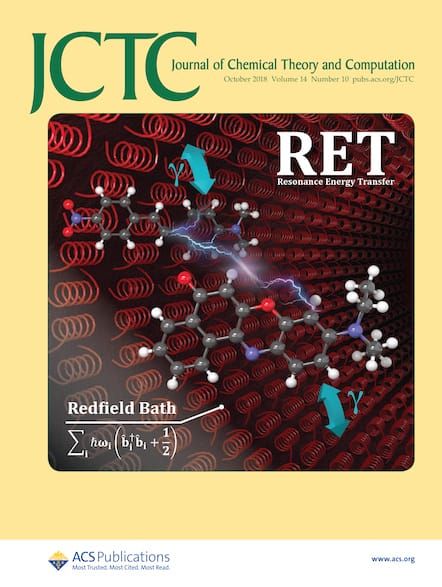在蛋白质与配体结合的炼金术自由能模拟中处理显著构象变化的方法
IF 5.7
1区 化学
Q2 CHEMISTRY, PHYSICAL
引用次数: 0
摘要
相对结合自由能(RBFE)模拟是计算蛋白质-配体结合的定量精确结合自由能值的一种严格方法,在模拟过程中,参考结合剂通过炼金术转化逐渐转化为目标结合剂。这种模拟的成功取决于能否为每种炼金术状态准确采样正确的构象相空间;然而,当参照粘合剂和目标粘合剂-受体复合物之间发生显著构象变化时,这就成为一项挑战。增加模拟时间和使用增强采样方法可能会有所帮助,但效果有限,尤其是当构象间的自由能障较高或正确的目标复合物构象难以找到和维持时。目前的 RBFE 协议会在模拟的每个炼金窗口中播入参考复合物结构。在我们的研究中,我们描述了一种改进的协议,即在炼金窗口的前半部分播入参考结构,在炼金窗口的后半部分播入目标结构。通过从一开始就将相关正确端点构象的信息应用于不同的模拟窗口,在许多情况下,炼金模拟过程中就不再需要大的障碍跨越或正确结构的模拟预测。在我们下面研究的各种情况下,模拟得出的自由能预测结果与实验结果相比令人满意,并且优于利用传统协议运行模拟的结果。该方法可直接用于公开的 FEP 工作流程。本文章由计算机程序翻译,如有差异,请以英文原文为准。

A Method for Treating Significant Conformational Changes in Alchemical Free Energy Simulations of Protein–Ligand Binding
Relative binding free energy (RBFE) simulation is a rigorous approach to the calculation of quantitatively accurate binding free energy values for protein–ligand binding in which a reference binder is gradually converted to a target binder through alchemical transformation during the simulation. The success of such simulations relies on being able to accurately sample the correct conformational phase space for each alchemical state; however, this becomes a challenge when a significant conformation change occurs between the reference and target binder–receptor complexes. Increasing the simulation time and using enhanced sampling methods can be helpful, but effects can be limited, especially when the free energy barrier between conformations is high or when the correct target complex conformation is difficult to find and maintain. Current RBFE protocols seed the reference complex structure into every alchemical window of the simulation. In our study, we describe an improved protocol in which the reference structure is seeded into the first half of the alchemical windows, and the target structure is seeded into the second half of the alchemical windows. By applying information about the relevant correct end point conformations to different simulation windows from the beginning, the need for large barrier crossings or simulation prediction of the correct structures during an alchemical simulation is in many cases obviated. In the diverse cases we examine below, the simulations yielded free energy predictions that are satisfactory as compared to experiment and superior to running the simulations utilizing the conventional protocol. The method is straightforward to implement for publicly available FEP workflows.
求助全文
通过发布文献求助,成功后即可免费获取论文全文。
去求助
来源期刊

Journal of Chemical Theory and Computation
化学-物理:原子、分子和化学物理
CiteScore
9.90
自引率
16.40%
发文量
568
审稿时长
1 months
期刊介绍:
The Journal of Chemical Theory and Computation invites new and original contributions with the understanding that, if accepted, they will not be published elsewhere. Papers reporting new theories, methodology, and/or important applications in quantum electronic structure, molecular dynamics, and statistical mechanics are appropriate for submission to this Journal. Specific topics include advances in or applications of ab initio quantum mechanics, density functional theory, design and properties of new materials, surface science, Monte Carlo simulations, solvation models, QM/MM calculations, biomolecular structure prediction, and molecular dynamics in the broadest sense including gas-phase dynamics, ab initio dynamics, biomolecular dynamics, and protein folding. The Journal does not consider papers that are straightforward applications of known methods including DFT and molecular dynamics. The Journal favors submissions that include advances in theory or methodology with applications to compelling problems.
 求助内容:
求助内容: 应助结果提醒方式:
应助结果提醒方式:


